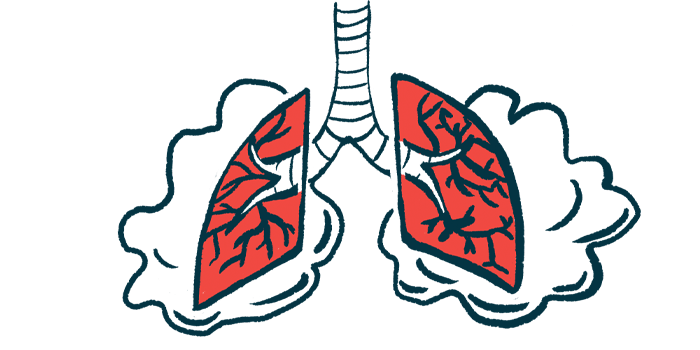Respiratory Symptoms, But Not Infections, Tied to Lung Damage in Infants

The presence of lung disease was low among infants with cystic fibrosis (CF) and was not associated with respiratory infections, yet respiratory symptoms, like cough or wheezing, may be a sign that lung disease is progressing, according to a recent study.
“Respiratory symptoms in infants with CF deserve attention as potential indicators of emerging structural lung disease,” the researchers wrote, adding that there is a “window of opportunity” in which the symptoms could be addressed to prevent lung disease from developing.
The study, “Association between early respiratory viral infections and structural lung disease in infants with cystic fibrosis,” was published in the Journal of Cystic Fibrosis.
Infants with CF often begin to develop signs of lung disease at an early age. While a role for respiratory infections in contributing to lung disease in adults with CF has been established, the role of these infections early in life remains unclear.
To learn more, a research team examined the relationship between respiratory infections and signs of lung disease on CT scans among 73 infants who were evaluated at CF centers in the U.S. and Australia.
Among the infants, the mean age at enrollment was 3.1 months, and participants remained in the study for a mean follow-up of 8.7 months.
In total, 820 nasal swabs — a median of 10 per infant — were collected to test for the presence of respiratory viruses. Of them, 304 swabs (37%) were positive for at least one virus. These infections occurred in 65 (89%) of the infants, for whom the mean number of positive swabs was 4.7.
The human rhinovirus — which causes the common cold — was the most commonly observed virus, found in 85% of participants.
Most infants (60 children) had CT scans at a mean age of 13 months (just over a year). Overall, minimal signs of structural lung disease were observed.
This relative lack of observed lung disease could be due to advancements in early screening and care for CF, the researchers noted, adding that some of the infants were concurrently participating in a study testing treatment with the antibiotic azithromycin (NCT01270074), which could have influenced their lung health.
No measured parameters of lung disease were significantly correlated with ever having a respiratory virus, the number of infections, or the age at detection of an infant’s first virus.
The team did find that the percent of total airway disease was higher in infants from the U.S. than Australia, which was likely driven by a greater amount of airway wall thickening — a lung symptom that makes breathing more difficult. An older age was also associated with more airway wall thickening.
Parents and physicians often reported respiratory symptoms in the CF infants, which did not overall correlate with a positive nasal swab for infection. However, nasal swabs were collected in less than half of the times that symptoms were reported, the team noted.
An analysis of reported symptoms and signs of lung disease on CT showed a significant association between a child ever having symptoms of wheezing and a higher amount of airway wall thickening, which led to an association between wheezing and levels of total airway disease.
Cough was also associated with a greater percent of airway wall thickening and with atelectasis — a partial or total lung collapse. Lower respiratory symptoms like wheezing or altered breathing were similarly associated with atelectasis.
The researchers found that detection of rhinovirus within two weeks of respiratory symptoms was associated with CT findings, namely, airway wall thickening and bronchiectasis — a condition in which the airways become damaged, leading to inflammation and scarring.
Overall, the findings “failed to show that the detection of respiratory viruses significantly contribute to the presence of structural lung disease assessed at approximately one year of age,” but do suggest that “frequent respiratory symptoms may be an indication that structural lung disease is progressing,” the researchers wrote.
The team noted that clinicians should carefully monitor and treat respiratory symptoms to prevent further lung damage in children with CF.








